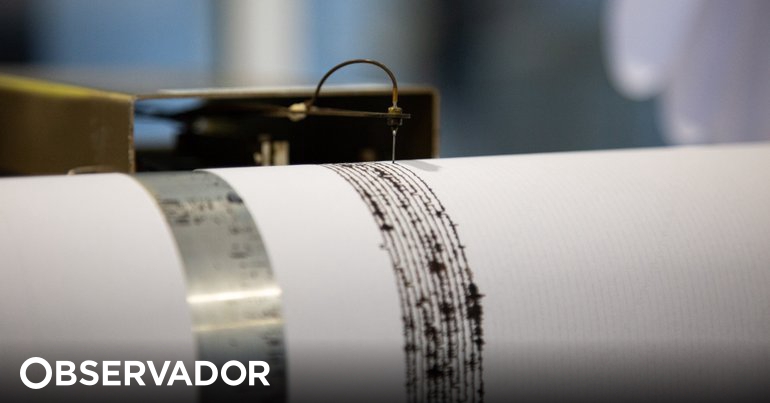
A series of earthquakes that reached a magnitude of 7.6 hit the coastal area of Ishikawa, in the center of the island of Japan and on the coast that faces the Sea of Japan. According to authorities, at least 48 people died (official information initial figure was six dead).
Wajima was one of the most affected locations due to its proximity to the epicenter of the earthquake.
Initially, a “major tsunami warning” was issued for the region that extends along the entire coast, including the areas of Niigata, Toyama, Yamagata, Fukui and Hyogo, according to Japanese national broadcaster NHK. An 80-year-old woman fell to the ground during the evacuation process in the city of Kurobe, according to the Europa Press news agency. The Pacific Tsunami Warning Center, based in Hawaii, has however ruled out the possibility of a tsunami. “The threat of a tsunami has been largely eliminated,” declared the US agency. Japan’s meteorological agency would also reduce all tsunami warning levels to a yellow level that allows waves up to one meter high. The alert was in effect for 18 hours along the western coast of the islands of Honshu and Hokkaido and the north of the island of Kyushu.
Despite this, the earthquakes had strong consequences on land. Hayashis Yoshimasa, who has the role equivalent to deputy secretary of state, confirmed that several buildings collapsed following the earthquake and also said he had information that six people were buried in the rubble, according to reports in the same Japanese outlet.
Initially it was reported by the local press that a man had died following the collapse of a building, but the Ishikawa authorities revised the number of deaths from the earthquakes upwards, to four dead, in what was the first point of situation and, more afternoon, for six. The number is likely to rise again as rescuers try to search for survivors.
“Saving lives is our priority and we are fighting a battle against time”, said the head of the Japanese Government, adding that it is “critical that people trapped in homes are rescued immediately”, said Japanese Prime Minister, Fumio Kishida .
South Korean President Yoon Suk-yeo sent a message of condolences to the Japanese Prime Minister for the victims of the earthquake.
Yoon offered Seoul’s help for recovery work in the affected area and hoped that the local population could return to normal life quickly.
According to the Japanese Ministry of Defense, around a thousand residents of the city were evacuated through a military base, where troops from the 14th General Regiment of the Japan Self-Defense Forces began arriving to help with rescue operations in the ground.
Five expressways were closed, some sections of the Joetsu Shinkansen and Hokuriku Shinkansen fast train lines were suspended and Noto airport had traffic closed. There will be 33 thousand homes without electricity and telephone communications are interrupted in Ishikawa and Niigata prefectures.
Images began to circulate of a fire that Hayashis Yoshimasa confirmed had occurred at the Shika nuclear plant, but said it had been extinguished without causing any impact.
This was the second emergency press conference of the day. The earthquake hit, above all, the prefecture of Ishikawa, on the north coast of the country and facing the Sea of Japan, one of the 47 into which Japan is divided.
According to the British Sky News, 50 earthquakes will have been felt in Japan this Monday, with magnitudes between 3.1 and 7.6. The majority were felt in the city of Noto, at the tip of the Ishikawa prefecture and peninsula.
Japan’s four main telecommunications operators – NTT Docomo, KDDI, Softbank and Rakuten Mobile – are offering rescue messaging services, with which users can publish their security status via text messages. sent to the internet and the information can be consulted on smartphones, cell phones and computers, explains NHK. Fixed network operators NTT East and NTT West have a disaster message service, but in voicemail and through the number 171, which can be used via landlines or mobile phones.
A “major tsunami warning” only occurs when tsunamis of three meters or more are expected. This type of warning has not occurred in Japan since 2011. According to the news station, people in the areas mentioned should leave quickly to high areas or away from the coast. The news also reports that some tsunamis have already been observed in the cities of Wajima, Toyama and Kashiwazaki measuring 1.2 meters, 80 centimeters and 40 centimeters, respectively, between 4:21 pm and 4:36 pm, after the earthquake, local time. The time difference between Lisbon and Japan is nine hours, so 4pm in Japan is 5am in mainland Portugal.
In the NHK publication on the social network it is possible to see the Japanese coast area on alert.
A massive earthquake has struck Ishikawa Prefecture, central Japan. A tsunami warning has been issued for Niigata, Toyama, Ishikawa prefectures of the Japan Sea side of the country. People in these area must evacuate immediately.https://t.co/bZpiKm8wIN pic.twitter.com/hl9ERDhF8C
— NHK WORLD News (@NHKWORLD_News) January 1, 2024
According to Reuters, a tsunami measuring less than one meter has already reached the east coast of South Korea, following the earthquakes in Japan. The South Korean meteorological agency warns of the risk of new and larger waves in the near future. In Gangwon province, residents were warned by authorities to head to higher areas. Across the East Coast, residents were warned to stay away from the shoreline. A tsunami warning was issued in North Korea for possible waves of more than two meters on the country’s coastlines. The message was broadcast on a radio station and captured by the South Korean news agency Yonhap.
The Japan Railway Company has had the Akita Shinkansen line suspended since 5:00 pm (local time) and two others have also been stopped since then without knowing when to resume service.
The Japanese Meteorological Agency (JMA) confirmed this Tuesday that central Japan was hit by 155 earthquakes between 4pm on Monday (7am in Lisbon) and 9am today (midnight in Lisbon). ).
Most of the earthquakes were recorded with magnitudes greater than 3.0, including six new strong tremors felt this morning, said the Japanese Meteorological Agency.
Hours earlier, the agency’s experts had warned that aftershocks would continue this week, being particularly dangerous over the next two or three days, during which strong tremors of magnitude seven or greater are likely to be repeated.
Japanese seismologists have urged local residents to be especially vigilant.
In Japan, 11 significant tremors were felt between 4:06 pm and 2:48 pm (local time), the strongest of which reached a magnitude of 7.6. The earthquake will reach Tokyo, 300 km away, where buildings began to shake, adds the British newspaper The Guardian.
The Japanese authority that regulates nuclear activity has already warned that no irregularities have been recorded in the power plants along the coast of the Sea of Japan. The closest to the earthquakes would be that of Ishikawa, which had its two reactors turned off before the earthquake to inspection and therefore did not feel the impact.
Several people used the social network This user says he is “seeing a terrifying tsunami for the first time”.
First time seeing a tsunami
scary
(This place has been evacuated vertically) pic.twitter.com/t5vxuKjdRb— Uchiiwa_Mutekimuki people (@naec0) January 1, 2024
Another user of the aforementioned social network published a video that he says was filmed on the Hagiura Bridge, in the city of Toyama, and also records the activity of the water flowing in the river. Both were published on the Indian television website NDTV.
Toyama City Hagiura Bridge Tsunami reaching pic.twitter.com/5TJkH4E1Mx
— Hajime Suzuki (@hioooomn) January 1, 2024
(News updated at 8:00 am on January 2nd with the new death toll made by the authorities)
Source: https://observador.pt/2024/01/01/ha-um-alerta-de-tsunami-no-japao-depois-de-sismo-de-7-6-atingir-o-pais/

